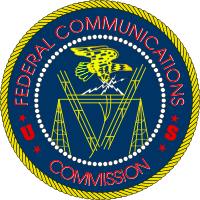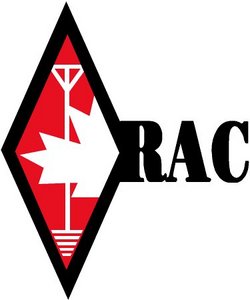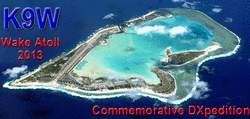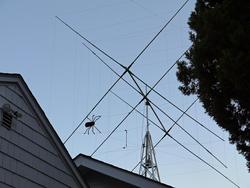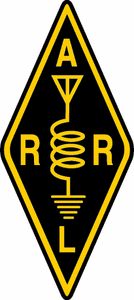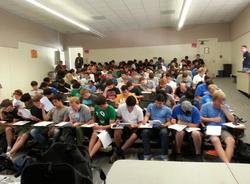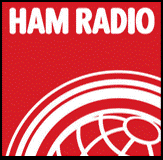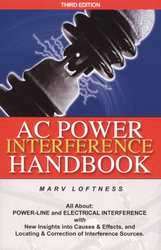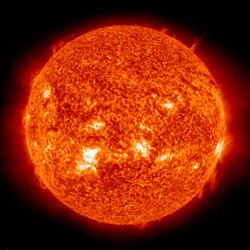 October 31, 2013 John E. Ross, KD8IDJ, Editor
| ||||||||||||||||||
On the Air: ARRL November Sweepstakes Marks 80 Years!
When the 2013 ARRL November Sweepstakes kicks into gear this weekend, it will mark the 80th running of the oldest domestic ham radio contest, which debuted in 1930. In case you're doing the math, Amateur Radio was ordered off the air during World War II, so no Sweepstakes events took place during those years. The Sweepstakes CW event is November 2-3, while the phone event is the weekend of November 16-17. On both weekends, the action gets underway at 2100 UTC Saturday and runs through 0259 UTC Monday. The 2013 ARRL November Sweepstakes Operating Guide provides details. An ARRL November Sweepstakes webinar by ARRL Contest Branch Manager Mike DeChristopher, N1TA, has been posted to the World Wide Radio Operators Foundation website. A Sweepstakes Primer An eHam article, "An Enticement for Contest Newbies" by Sweepstakes Manager Larry Hammel, K5OT, Ward Silver, NØAX, and Mike Gilmer, N2MG, helps explain the intricacies of SS and offers tons of valuable tips to newcomers. Unlike most other on-the-air competitions -- and adding to the challenge -- SS has a somewhat lengthy exchange, which participants must copy accurately to earn points. The exchange follows a pattern that reflects the event's origins as a traffic-handling exercise and borrows some radiogram vocabulary. For those unfamiliar with SS, the exchange consists of a consecutive serial number; a "precedence" -- a letter representing your entry category, eg "A" for single ops running 100 W; your call sign; a "check" consisting of the last two numerals of the year in which you were first licensed, and your ARRL or Radio Amateurs of Canada Section. So, the first exchange handed out to K2RHJ by single op, low-power W8EXK, first licensed in 1958 and living in West Virginia might look like this: K2RHJ NR 1 A W8EXK 58 WV (the "NR" is optional). Participants work each station once for contact points, and the score multiplier is the number of ARRL/RAC sections worked (83 total). The Big Eight-Oh! For the 2013 running the number 80 comes into play for participants who want to enhance the fun and the challenge by setting some individual achievement goals this year -- for example, for working 80 contacts per mode, scoring 80,000 points (total), running 80 W, and even for working all ARRL sections traversed by Interstate 80 and all sections on 80° W longitude. SS operators also can earn recognition for working all of the ARRL Sections in place in 1930 -- there were 68 back then, as opposed to 83 today. New this year are an 80 years T shirt and "Clean Sweep" coffee mug, as well as participation pins and a special certificate. Operators 80 years old or older will get special recognition, as will participating clubs. There's more, and details are on the ARRL November Sweepstakes web page. SS-80 Individual Recognition Individual achievements are a bit of a do-it-yourself proposition. Operators will be able to download a blank certificate and achievement stickers (these will be on a standard Avery 5160 sticker form) as PDF files. Then, after printing these out, participants can apply the appropriate stickers to their certificates as they meet various achievement levels. Operators 80 years old or older are invited to e-mail the details of their SS participation (and a photo, if possible) for including on the ARRL website and in the online writeup of the ARRL November Sweepstakes results. There's more on the ARRL November Sweepstakes web page. SS-80 Club Recognition Clubs reaching these totals on both modes will be listed on the ARRL website and in the extended online contest results article.
Clubs don't have to do anything. These achievements will be noted automatically. Full information on individual and club SS-80 recognition is on the ARRL November Sweepstakes web page. Regulatory: And Again There Were Five: FCC Back to Full Complement
The Federal Communications Commission once again has its full complement of five commissioners. On Tuesday, the US Senate confirmed the White House nomination of venture capitalist and industry insider Thomas Wheeler, a Democrat, to be FCC chairman. He succeeds former FCC Chairman Julius Genachowski, who stepped down in June. The Senate also confirmed Michael O'Rielly as a commissioner to one of the two Republican seats on the Commission. O'Rielly, a New Yorker who is on the staff of Texas Republican Senator John Cornyn, will fill the remainder of the term expiring June 30, 2014, that had been held by Robert M. McDowell, who resigned in May. Acting FCC Chairwoman Mignon L. Clyburn, who now will return to her seat as a commissioner, congratulated Wheeler and O'Rielly on their confirmations. "Tom brings a tremendous depth of experience, talent, and knowledge that will serve him well as the leader of this critically important agency," Clyburn said in a statement. "I have no doubt that he will be an outstanding FCC Chairman. With his extensive public policy expertise and understanding of the communications landscape, Michael will certainly be an invaluable asset to the Commission." Wheeler also served as a wireless and cable industry lobbyist. He was president of the National Cable Television association from 1979 until 1984. Senate politics had held the FCC to just three members since last spring. Texas Republican Senator Ted Cruz had blocked Wheeler's nomination vote over concerns that the FCC might adopt new political TV advertising disclosure rules. Cruz says that Wheeler told him this week that the issue was not a priority. Regulatory: ARRL Supports FCC WRC-15 Advisory Committee Recommendations Affecting Amateur Radio
The ARRL has expressed its support for three recommendations affecting Amateur Radio frequency allocations, which the FCC's World Radiocommunication Conference 2015 FCC Advisory Committee (WAC) has already approved. ARRL Chief Technology Officer Brennan Price, N4QX, filed comments on behalf of the League on October 17 in IB Docket 04-286. The League has concluded that the WRC-15 Agenda Item 1.1 recommendation for 420-450 MHz "maintains a status quo that accommodates many users and works well." The Amateur Service is secondary on the 70 centimeter band in the United States. At least one administration has proposed to introduce international mobile telecommunications (IMT) -- cellular telephone and wireless broadband -- to the bottom 10 MHz of the band, but the League said it agrees with the WAC and the NTIA that things are just fine as they stand.
"The status quo is successful and represents a success story for spectrum management," the League said. "Introduction of IMT in the 420-430 segment of this band, as proposed by one administration, will most assuredly upset this status quo." The ARRL pointed out that although ham radio is secondary on the band, "radio amateurs have a vested interest in maintaining their ability to use the band," and Amateur Radio has been "a responsive and responsible sharing partner" to the band's primary users. For its part the WAC said, "The results indicate that for most cases, sharing between IMT-2000 base/mobile stations and the various types of radars when placed in adjacent spectrum is not feasible in the absence of mitigation." Based on information at hand, the committee said, "it is logical to conclude that co-frequency sharing between IMT and the radiolocation service in the 420-450 MHz bands is not feasible." The League also said the WAC recommendation for WRC-15 Agenda Item 1.10 regarding 22 to 26 GHz "protects the only worldwide, primary Amateur and Amateur-Satellite Service allocation between 146 MHz and 47.2 GHz." "Sharing with incumbent services, including the Amateur and Amateur-Satellite services at 24.-24.25 GHz will require technical and operation constraints that will result in spectrum being impractical for use by the MSS [Mobile Satellite Service]," the ARRL said. The Amateur and Amateur-Satellite services are primary at 24-24.25 GHz. "Radio amateurs have been responsible stewards of a band that is difficult to use, and the WAC proposal of no change to the entire 22-26 GHz range is particularly applicable to the 24-24.25 GHz segment." WRC-15 Agenda Item 1.18 considers a primary allocation to the radiolocation service for automotive applications in the 77.5-78.0 GHz frequency band in accordance with a resolution adopted at WRC-12. The League suggested that the FCC support the WAC recommendations "as a base for eventual reconciliation with an NTIA [National Telecommunications and Information Administration] position," or that the FCC not support any position on the agenda item, "as conducted studies to not support a position more expansive than that contained in the recommendation." The Amateur and Amateur-Satellite services are now primary in the 77.5-78 GHz band, with Radio Astronomy Service users secondary. Regulatory: IARU Region 2 Publishes New Band Plan
International Amateur Radio Union (IARU) Region 2 (the Americas) has published a revised IARU Region 2 Band Plan for all allocations from 137 kHz to 250 GHz, effective September 27, 2013. The member-societies of IARU Region 2 adopted the new plan during their triennial General Assembly in Cancun, Mexico, in late September. Delegates from 18 national Amateur Radio associations attended. Representing the ARRL were President Kay Craigie, N3KN, as the voting delegate; First Vice President Rick Roderick, K5UR; Chief Executive Officer David Sumner, K1ZZ, and Technical Relations Specialist Jonathan Siverling, WB3ERA. "For the first time in Region 2, band plans for the VHF, UHF, and microwave bands were adopted to guide development of these bands," Sumner said. "HF band plans were reviewed with the objective of improving terminology and aligning them more closely with those of the other regions, particularly Region 1 (Europe, Africa, the Middle East, and the former Soviet Union)." The revised document earmarks a new segment for the Amateur-Satellite Service from 144.000 to 144.025 MHz. As it states in the plan's introduction, "The IARU Region 2 has established this band plan as the way to better organize the use of our bands efficiently. To the extent possible, this band plan is harmonized with those of the other regions. It is suggested that member-societies, in coordination with the authorities, incorporate it in their regulations and promote it widely with their radio amateur communities." The band plan includes definitions for the first time. Read more. Regulatory: FCC Fines Former Radio Amateur for Unlicensed Operation on 20 Meters
The FCC has fined Jared A. Bruegman, ex-KCØIQN, of Bolivar, Missouri, $500 for transmitting on 14.312 MHz without a license. Last February, the FCC told Bruegman in a Notice of Apparent Liability for Forfeiture (NAL) that it intended to impose a $10,000 fine, but in a Forfeiture Order released October 23, the FCC reduced the fine. "Based on the financial documents provided by Mr. Bruegman," the FCC said in its Forfeiture Order, "we find that there is a sufficient basis to reduce (but not cancel) the forfeiture to $500." Responding to the earlier NAL, Bruegman had claimed the $10,000 forfeiture would "bankrupt" him, and he requested the FCC cancel the sanction altogether. The FCC cautioned Bruegman that inability to pay is only one factor in its forfeiture calculations. "In this regard, we have previously rejected inability to pay claims in cases of repeated or otherwise egregious violations," the Commission said. "Therefore, future violations of this kind may result in significantly higher forfeitures that may not be reduced due to Mr. Bruegman's financial circumstances." The FCC said it affirmed the finding outlined in the earlier NAL that Bruegman had violated Section 301 of the Communications Act of 1934. FCC agents in December 2012 observed an unlicensed radio transmitter operating on 14.312 MHz from a residence in Bolivar. Bruegman, the only person at home at the time, admitted to owning the radio transmitting equipment. "Based on the record evidence, which Mr. Bruegman does not dispute, we conclude that Mr. Bruegman willfully violated Section 301 of the Act by operating radio transmission equipment without the required Commission authorization," the FCC concluded. The FCC gave Bruegman 30 days to pay or make arrangements to pay the fine or have his case referred to the US Department of Justice for enforcement. Bruegman had held a Technician class license from 2000 until 2010, when it expired. Bruegman did not renew the license, and it was deleted in 2012. Regulatory: RAC, Canadian Amateurs Favor New MW Amateur Band
Radio Amateurs of Canada has commented in support of a proposal that would create a new secondary Amateur Radio medium-wave allocation at 472 to 479 kHz. The new 630 meter band was proposed in a Consultation released in June by Industry Canada, the nation's radiocommunication regulator. It proposed numerous revisions to Canada's table of allocations warranted in the wake of World Radiocommunication Conference 2012 (WRC-12). Last year the ARRL asked the FCC in 2012 to carve out the same MW band for US hams. "RAC is pleased to see the department has included this allocation to the amateur service on a secondary basis in Canada, consistent with outcome of Agenda Item 1.23 at the World Radio Conference 2012," said RAC President Geoff Bawden, VE4BAW, on behalf of RAC. "It is acknowledged that amateur service use of this new...band will be limited to 5 W effective radiated power relative to an isotropic radiator," Bawden continued. In line with WRC-12, Industry Canada proposed that stations in the Amateur Service "shall not cause harmful interference to, or claim protection from, stations of the Aeronautical Radionavigation Service." Bawden said the addition of the MW band to the Amateur Service "will give Amateur Radio operators in Canada an opportunity to participate with other amateur operators in conducting short and long-range propagation studies using very narrowband digital techniques. Such communications will provide another path for emergency and disaster relief communications, when necessary." Several Canadian radio amateurs and other organizations also filed comments favoring the new MW allocation.
Low-frequency experimenter Joe Craig, VO1NA, writing on behalf of the Marconi Radio Club of Newfoundland (MRCN), added that group's voice to those supporting the creation of the 472-479 kHz band in Canada. "From 2009-2012 , we and other Canadian amateurs conducted experiments between 504 and 509 kHz in support of a domestic allocation to the Amateur Service in this portion of the radio spectrum," Craig noted. "We have used Morse and digital transmissions on 504.1, 507.77 and 508.5 MHz and were authorised to use up to 20 W ERP. There were no reports of interference from these operations." Utilities in Canada and the US have opposed the addition of a secondary Amateur Radio allocation at 472-479 kHz as well as at 135.7 to 137.8 kHz. In its comments, the Utilities Telecom Council of Canada (UTCC) urged IC not to establish an Amateur Radio allocation at 472-479 kHz, saying that interference to power line communication (PLC) systems operating in that part of the spectrum is highly likely and would be difficult to mitigate, since the PLC systems would have to avoid interfering with amateur operations. "If there was an amateur allocation at 472-479 kHz, amateurs could freely operate in close proximity to transmission lines without the utility knowing that they were there," the UTCC said in its comments. "Utilities would probably only become aware of these operations when it was too late, because they would experience unexplained outages or mis-operation of PLC systems. Interference to PLC systems has to the potential to cause widespread electrical outages." Craig asserts that the utilities are using drama, conjecture and "outright inaccuracies" to support their position, even citing what he called "the unfortunate FCC decision to deny 137 kHz" to US hams. "We can hope that reason will prevail, and that the new band will soon become available to Canadian amateurs," he told ARRL. DX: K9W Wake Atoll DXpedition Team Gets Entry Okay
The K9W Wake Atoll DXpedition, which was put on ice as a result of the partial government shutdown, now has US Air Force permission to visit Wake. "Our equipment is already on Wake and in safe storage awaiting our arrival," the team said in a media release. The 12 operators plan to assemble in Hawaii on October 30, leave November 1, arrive November 2 and "immediately erect antennas and set up the stations." The team expects to have two CW and two SSB stations on the air, and current plans call for K9W to be active from November 3 through November 15 (Wake Island time). The team has posted its operating plan on its website. The Wake Atoll Commemorative DXpedition is the recipient of an ARRL Colvin Award grant. DX: Easter Island DXpedition Set
Members of the Uruguay DX Group will be on the air from Easter Island as XRØYY November 1-7. A seven-person team will operate from Hanga Roa, running three stations simultaneously on 1.8 through 50 MHz, CW, SSB and digital modes. QSL via EB7DX. Easter Island is number 107 on the ClubLog Most Wanted list. Operators include Jose, CEØHYO; Gustavo, CX2AM; Humberto, CX3AN; Gustavo, CX3CE; Mario, CX4CR; Gen, EA5HPX; Francisco, EA7FTR, and Carlos, LU2NI. -- The Daily DX DX: Operation Approved for DXCC Credit The ARRL DXCC Desk has approved the 2012 and 2013 operations of T6MH -- Afghanistan for DX Century Club credit. If a request for DXCC credit for this operation has been rejected in a prior application, contact ARRL Awards Branch Manager Bill Moore, NC1L, to be placed on the list for an update to your record. Please note the submission date and/or reference number of your application in order to expedite the search for any rejected contacts. DXCC is Amateur Radio's premier award that hams can earn by confirming on-the-air contacts with 100 DXCC "entities," most of which are countries in the traditional sense. You can begin with the basic DXCC award and work your way up to the DXCC Honor Roll. Learn more. -- ARRL Awards Branch Manager Bill Moore, NC1L Miscellany: Creepy Crawly Quad Just in Time for Halloween
John Parnell, K7HV, of Seattle, Washington, recently installed a 3 element quad. He explains the creepy part: "One of the folks helping me with the install -- Jessica, W7EMF -- suggested that I put a giant spider on it," Parnell says. "So I ordered one online, installed it and put a picture of it up on my Facebook page." Before installing the spider, Parnell used his new antenna in the CQ World Wide DX phone contest and worked 107 entities barefoot, although he gives some credit to the superlative conditions. Parnell says the spider has steel wire in the legs, so he waited until after the contest to install it. "[T]ests indicate that the arachnid has not changed the SWR significantly," he reports, but allows that it might make for an interesting EZNEC plot. -- Thanks to Ward Silver, NØAX Events: "Hams in Space" Team to Appear at ARRL Midwest Division Convention
The "Hams in Space" team of Eddy Paul, KYØF; Jeremy Widner, ACØDX, and Randy Schulze, KDØHKD, will appear at the ARRL Midwest Division Convention, Friday and Saturday, November 8 and 9, in Lebanon, Missouri. The Hams in Space presentation explains how to successfully get on FM Amateur Radio satellites, in most cases with equipment operators typically already own. Their emphasis is to "keep it simple" and "have fun." The "Hams in Space" presentation will take place Saturday at noon in Room A. A special guest will be NASA Astronaut Steven Nagel, N5RAW. A good pass of the SO-50 satellite may fit into the schedule, and plans call for one or two hands-on demonstrations, weather permitting. -- AMSAT News Service via Randy Schulze, KDØHKD Events: Cal Poly ARC Records Big Boost in Exam Session Attendance When the Cal Poly Amateur Radio Club (CPARC) hosted its quarterly Amateur Radio test session this month, 91 individuals turned up to earn their Technician tickets. That was an increase of 71 percent over the club's previous record of 53 new licensees in the fall of 2010. The October 19 session was the largest in the history of San Luis Obispo County, California, the club says. CPARC President and electrical engineering senior Shaun Koide, KH6EI, credited the school's Electrical Engineering Department.
"The Electrical Engineering Department has been instrumental in making clubs like ours successful this year," he said. EE Deparment Chair Dennis Derickson, ACØP, responded, "It's been wonderful to give students access to such a great hobby that really exemplifies Cal Poly's learn-by-doing philosophy." Active in public service, the club maintains an emergency communications station on campus for the San Luis Obispo Emergency Communications Council (SLOECC). The station is equipped with emergency power and radio gear to support public safety agencies for the event of a disaster. Media: New E-Pub to Take Up Where Monitoring Times Leaves Off When Monitoring Times publishes its final issue in December, a new electronic publication, The Spectrum Monitor, will follow in its footsteps. Monitoring Times announced earlier this year that it was ceasing publication after a 33 year run and the retirement of its publisher, Bob Grove, W8JHD.
Monitoring Times Managing Editor Ken Reitz, KS4ZR, will helm The Spectrum Monitor, which will debut in January and, as he explained in announcing the new publication, "will carry virtually all of the current Monitoring Times columnists and feature writers." Reitz said The Spectrum Monitor will be available only in Adobe PDF format, which may be read on any desktop, laptop, iPadâ¢, Kindle Fire⢠or any other device capable of opening a PDF file. The Spectrum Monitor promises to cover radio listening and monitoring, from Amateur Radio and Amateur Radio satellites to scanning; aeronautical, utility, and government monitoring; Amateur Radio astronomy; long-wave monitoring; short wave broadcasting; antennas, and radio restoration. Media: Ham Radio (Friedrichshafen) 2013 Forum Presentations Available on the Web
The Documentary Archive for the History of Radio Communication and Electronic Media (DokuFunk) has posted several PowerPoint lectures from Ham Radio 2013, held in Friedrichshafen, Germany. These include:
The presentations are designed for Microsoft Office 2010 version of PowerPoint. If you have an earlier version of PowerPoint installed, save the file(s), which you then can open (on Windows machines, they will be in the "Downloads" folder) with an earlier version of PowerPoint in "compatibility mode." From the top PowerPoint menu, click "View" then "Slide Show." Use the space bar or Enter key to change slides. Milestones: Power Line Noise Expert Marv Loftness, KB7KK, SK
Marvin O. "Marv" Loftness, KB7KK, of Olympia, Washington, died October 17. He was 93. A power line noise expert, Loftness may be best known in Amateur Radio circles for his book, AC Power Interference Handbook, distributed by ARRL in its third edition, revised (ARRL is the exclusive distributor.) "His book is held in high regard by many EMC experts," said ARRL Sales and Marketing Manager Bob Inderbitzen, NQ1R, "but he was also the kindest man. I'll miss our contact with him." His wife, Nancy Loftness, sent ARRL the manuscript of his book in January 2012, granting the League permission to use it in perpetuity. Loftness served as a US Army Air Corps radio instructor-technician during World War II. After the war, he went to work with the Federal Aviation Administration, where he suggested a modification to the agency's instrument guidance-and-landing system that was adopted nationwide. He also was as a design engineer for Boeing. In the late 1950s he went to work for the Bonneville Power Administration, retiring in 1975. After retirement, he continued as a consultant and research engineer. Loftness was elected a Fellow of the Power Engineering Society of the Institute of Electrical and Electronics Engineers (IEEE) for his "development of efficient means of locating and correcting high-voltage power line noise." Solar Update
Solar Guru Tad "I'll Follow the Sunspots" Cook, K7RA, Seattle, Washington, reports: It's been a lively couple of weeks, with plenty of sunspots and great HF propagation. The average daily sunspot number for the week was 161.6, essentially unchanged from last week's average of 162. Solar flux values were up quite a bit, though, rising from 139.6 to 158.3 -- a healthy jump.
Predicted daily solar flux:
Predicted planetary A index:
On October 26 the Penticton solar flux reading was 171.8, but NOAA downgraded it to 165, probably because the higher value was an outlier caused by solar events overloading the receivers at Penticton. You may recall the comment from VU2NS last week about HF contest operations charging the ionosphere with all those high-powered stations with big antennas on the air. It's an old joke, but K9LA ran the numbers for us, just to see how farfetched the concept is. Look for it in this week's bulletin. We'll also have an updated ARRL November Sweepstakes forecast for this weekend, the CW portion of the contest. This Week in Radiosport Nov 1 -- NS Weekly Sprint, CW Nov 2-3 -- Ukranian DX Contest, SSB+CW Nov 2-3 -- Himalayan Contest, SSB+CW Nov 2-3 -- Radio Club of America QSO Party, SSB Nov 2-4 -- ARRL November Sweepstakes, CW Nov 3 -- DARC 10-Meter Digital "Corona" Nov 4 -- OK1WC Memorial Contest, SSB+CW Nov 5 -- ARS Spartan Sprint, CW Nov 9-10 -- Worked All Europe DX Contest, digital Nov 9-10 -- 10-10 Fall Digital QSO Party, digital Nov 9-10 -- Japan International DX Contest, SSB Nov 9-10 -- OK-OM DX Contest, CW Nov 9-10 -- Straight Key Weekend Sprintathon, CW Nov 9-10 -- Kentucky QSO Party, SSB+CW+digital Nov 9-11 --CQ WE (Western Electric), SSB+CW+digital Upcoming ARRL Section, State and Division Conventions and Events November 2 -- Fall TechFest, Lakewood, Colorado November 2-3 -- Georgia Section Convention, Lawrenceville, Georgia November 8-9 -- Midwest Division Convention, Lebanon, Missouri November 9 -- Atlantic Division Virtual Convention (Webinar) November 9 -- All-Ohio ARES Conference, Reynoldsburg, Ohio November 16-17 -- Indiana State Convention, Fort Wayne, Indiana December 6-7 -- West Central Florida Section Convention, Plant City, Florida January 5 -- NYC/LI Section Convention, Bethpage, New York January 17-18 -- North Texas Section Convention, Fort Worth, Texas January 19-26 - Quartzfest Convention, Quartzite, Arizona January 24-25 -- Mississippi State Convention, Jackson, Mississippi January 25-26 -- Puerto Rico State Convention, Hatillo, Puerto Rico January 31-February 1 -- Southern Florida Section Convention, Miami, Florida Find conventions and hamfests in your area. ARRL -- Your One-Stop Resource for Amateur Radio News and Information Join or Renew Today! ARRL membership includes QST, Amateur Radio's most popular and informative journal, delivered to your mailbox each month. Listen to ARRL Audio News, available every Friday. Subscribe to... NCJ -- National Contest Journal. Published bi-monthly, features articles by top contesters, letters, hints, statistics, scores, NA Sprint and QSO Parties. QEX -- A Forum for Communications Experimenters. Published bi-monthly, features technical articles, construction projects, columns and other items of interest to radio amateurs and communications professionals. Free of charge to ARRL members: Subscribe to the ARES E-Letter (monthly public service and emergency communications news), the ARRL Contest Update (bi-weekly contest newsletter), Division and Section news alerts -- and much more! | ||||||||||||||||||
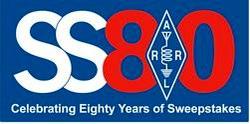
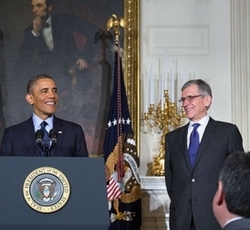
.png)


